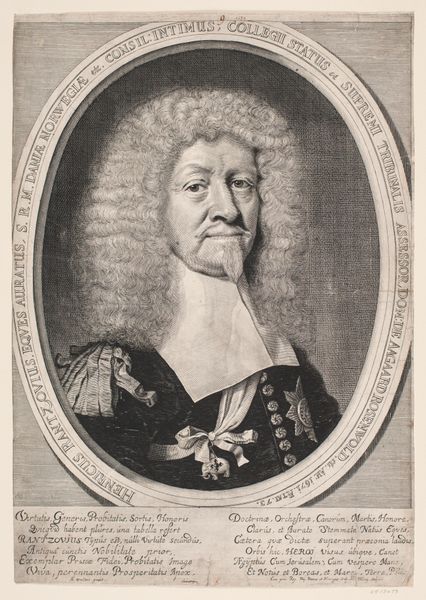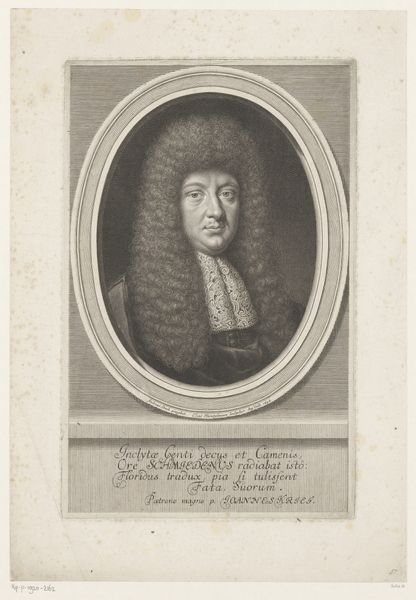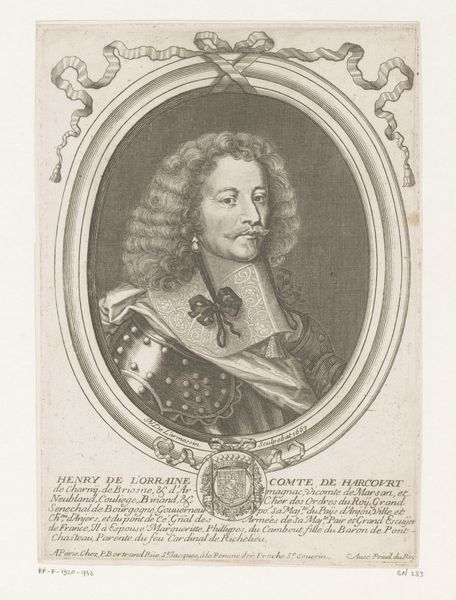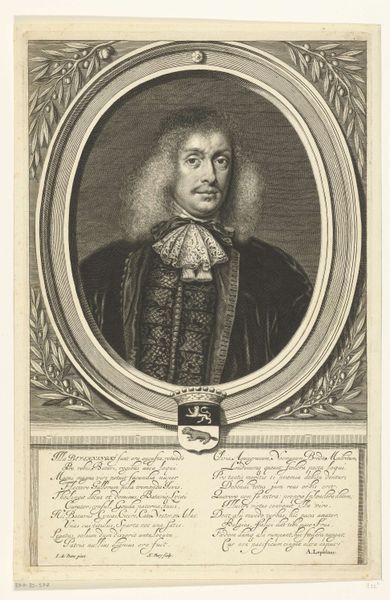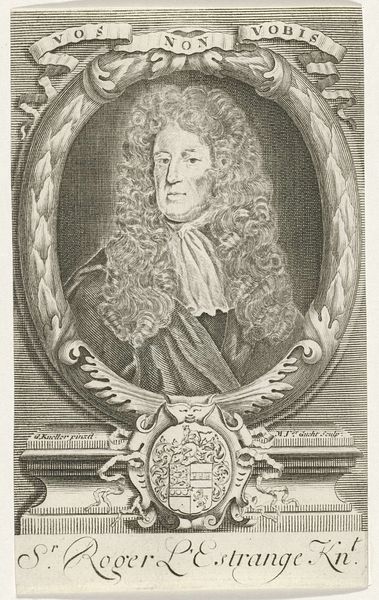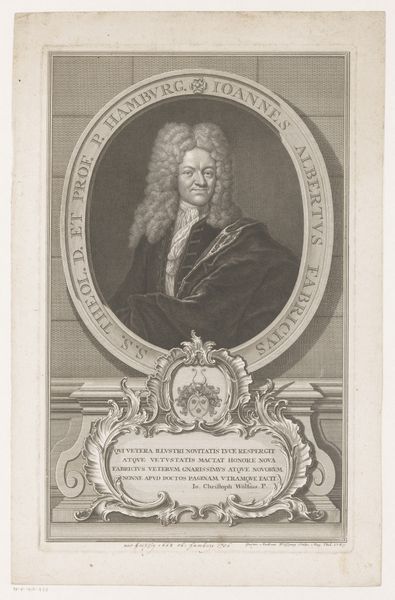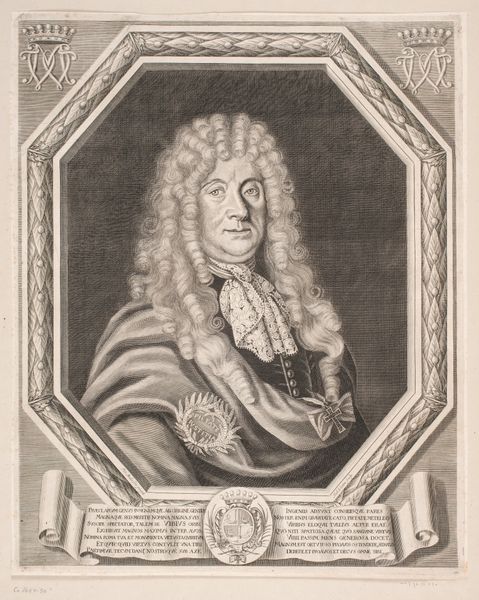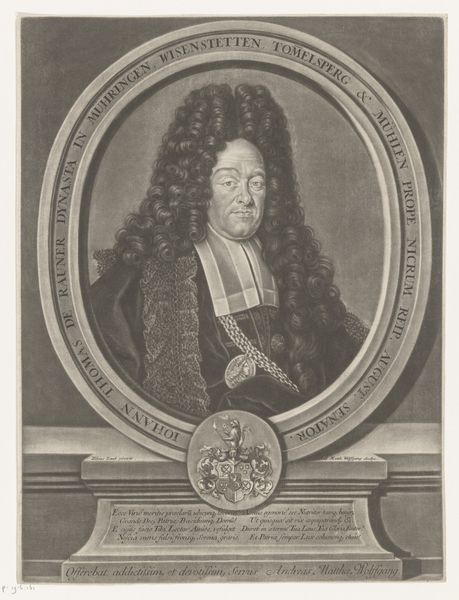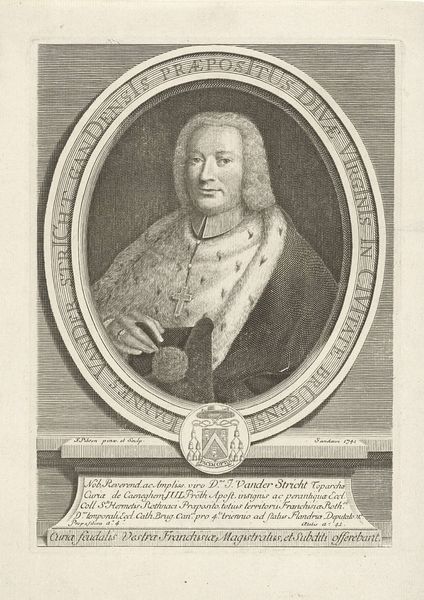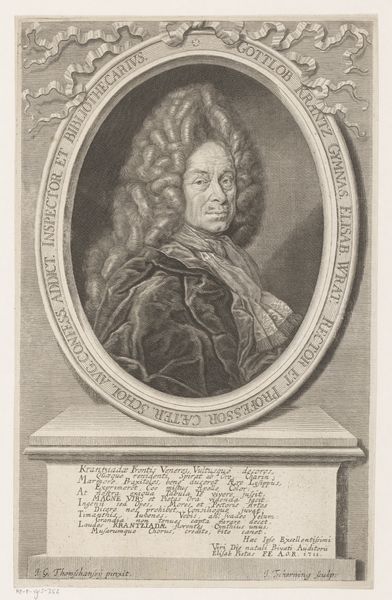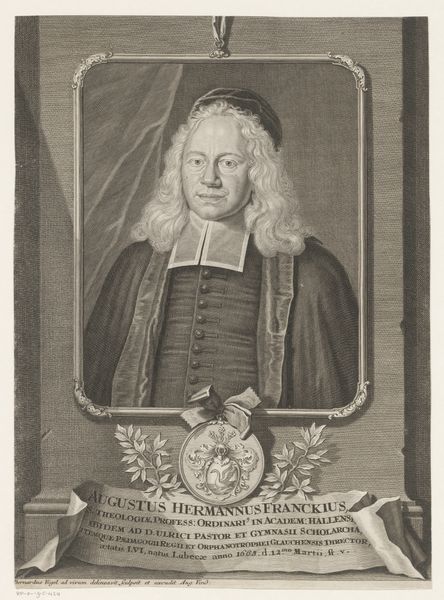
print, engraving
#
portrait
#
baroque
# print
#
history-painting
#
engraving
Dimensions: 442 mm (height) x 317 mm (width) (plademaal)
Curator: A stern countenance captured in monochrome. The lines of this engraving from 1671 create a strong sense of gravity, wouldn't you say? Editor: It does, undeniably. What strikes me immediately is the density of the lines used to form his wig. The textural detail created solely with line is quite compelling, if slightly unsettling. Curator: This is Albert Haelwegh's engraving, "Henrik Rantzau," currently held at the Statens Museum for Kunst. It's interesting how portraiture of this period aimed to solidify a subject's social standing through visual cues. Rantzau held significant positions within the Danish and Norwegian states; those titles and accolades are carefully inscribed within the oval surrounding his image, emphasizing his public identity. Editor: You're right, the meticulous detail certainly elevates him. See how the density of the hatching models the form, especially in the face and ruff? I'm almost convinced I could run my fingers across this surface. And that ribbon slung across his chest and shoulder really catches the eye—such striking semiotic signals, clearly indicating rank and social value. Curator: Exactly! The arrangement is deliberately crafted to convey authority and accomplishment. Every element contributes to constructing this powerful public image. In his time, portraits like these played a vital role in constructing individual and familial prestige within elite social circles. Prints, especially, allowed for wider circulation and thus wider validation. Editor: Fascinating! It highlights the intrinsic ability of art to solidify identity through surface and composition, which, when broadly distributed, establishes enduring status. Looking closely now, I can’t help but notice how his slightly down-turned mouth betrays what the composition seems to conceal, a weariness perhaps? It makes him feel more human than I initially assumed. Curator: Indeed, these hints of individual expression can be intriguing, but ultimately, the primary function of this artwork would have been to broadcast Henrik Rantzau's status and achievements to his contemporaries, cementing his place in history. Editor: Well, focusing solely on line and light has made me consider how even printed portraiture can simultaneously obscure and highlight elements to emphasize an identity. Thank you for helping me to contextualize these compelling effects!
Comments
No comments
Be the first to comment and join the conversation on the ultimate creative platform.
